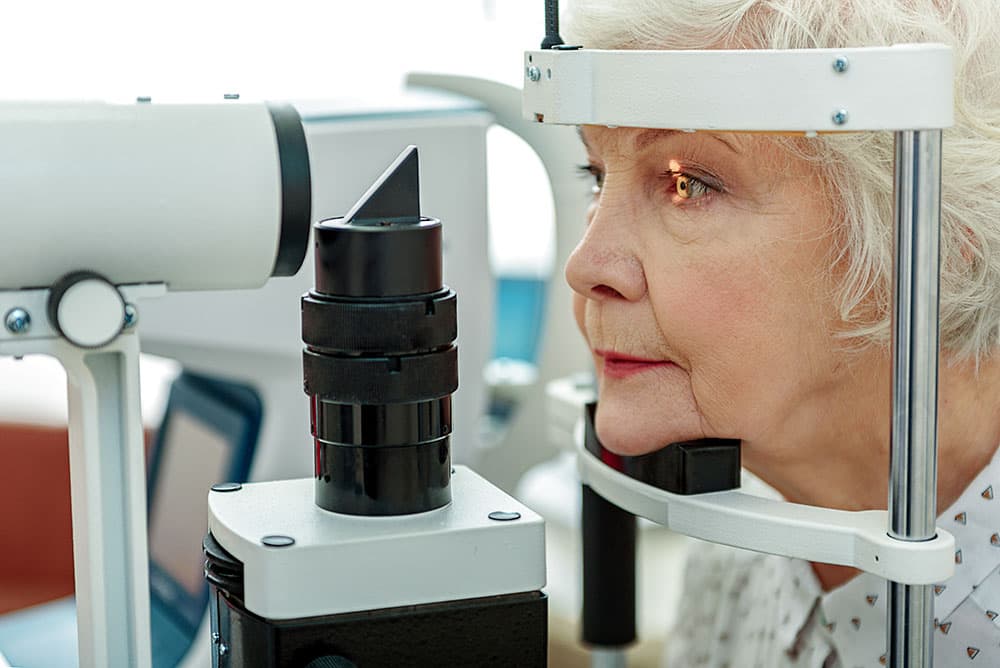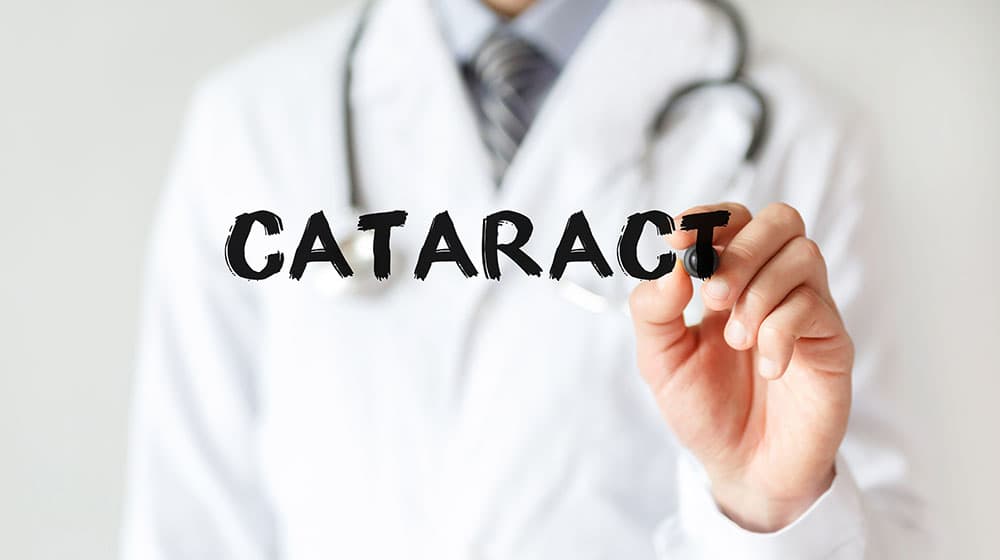
To understand a cataract, it is important to understand how the eye works. The eye functions much like a camera. Light rays enter the eye, passing through the cornea, then the pupil, and through the lens. The lens bend the light rays to focus objects onto the retina, lining the back of the eye. From there, the image passes through the retinal cells, into the optic nerve, and finally to the back of the brain which processes the images.
Cataracts occur when there is a buildup of protein in the lens that makes it cloudy. This prevents light from passing clearly through the lens, causing some loss of vision. Since new lens cells form on the outside of the lens, all the older cells are compacted into the center of the lens and a cataract is formed. When the lens becomes cloudy it is then called a cataract.

Vision that is cloudy, blurry, or foggy; having difficulty reading street signs, reading a newspaper, seeing TV captions, following a golf ball, etc.
Changes in perception of color because the discolored lens acts as a filter.
Problems driving at night, such as glare from oncoming headlights.
Glare problems during the day from sunlight.

We understand that cataracts are scary and many people who are diagnosed believe that there is something they could have done to prevent it. While there are plenty of risk factors thought to contribute to cataract formation, there is no known way to prevent cataracts. The largest risk factor for cataracts is age. In fact, over 25 million people in the US alone are living with cataracts today, with that number expected to double by 2050. It is unlikely that lifestyle choices will prevent cataracts from developing.
Cataract risk factors include:
There is no known method of cataract prevention, and there is some controversy about whether or not it can be done. However, there are numerous studies, past, and ongoing, that suggest there may be a way. Some believe reducing UV exposure by wearing sunglasses can help. Others think that your diet may have a lot to do with whether or not you develop cataracts. Studies have suggested that certain nutrient and nutritional supplements may reduce your risk of developing cataracts.
One such study of female health professionals over a 10-year period found that high intakes of vitamin E and other nutrients were associated with a significant decrease in cataract development. Good sources of vitamin E include sunflower seeds, almonds, and spinach.
While these things may reduce your risk of developing cataracts, they cannot treat them. The only treatment for cataracts is cataract surgery.
An eye exam should be given to test how well you can see wearing your glasses (be sure to bring them to your appointment). The doctor will dilate your pupils in order to examine the condition of the lens and other parts of the eye.
Need help? Reach out to us today at 239-542-2020.
The material contained on this site is for informational purposes only and is not intended to be a substitute for professional medical advice, diagnosis, or treatment.
Always seek the advice of your physician or the other qualified health care provider.